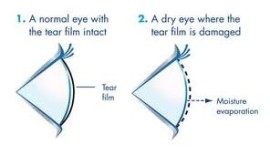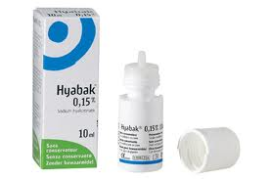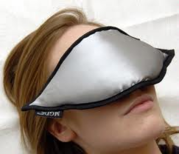Are your Eyes......
Watery tired
Gritty heavy eyes
Burning
Sore easily irritated
Fluctuating
vision
Eyelids stuck together
You may have
DRY EYE SYNDROME
We offer a specialist Dry Eye Clinic where we ask questions about your specific symptoms then we have a closer look at your lids, lashes and the front surface, tear film of your eyes. After this assessment we will recommend treatments which you can use for a couple of weeks and then return for a follow up assessment.
Sadly this service is not NHS funded.
More information about dry eye:
Dry eye syndrome is a
multifactorial disease of the
tears and ocular surface that results in a range of symptoms, including
discomfort, visual disturbance, tear film instability and potential damage to
the ocular surface.
The key features of dry eye syndrome are:
- Decreased tear production
- Increased tear evaporation
- Incorrect composition of tears
These result in inadequate lubrication of the eyes.
Dry eye is a catch-all term referring to abnormalities
of the tear layer which normally
coats the surfaces of the eyes, providing clear vision and protecting sensitive
surface tissues
Patients will present with some
or
all of the following symptoms
- Scratchy, gritty eyes
- Aching or sore eyes
- Smarting or burning eyes
- Eyes tire easily, particularly
noticeable when reading, watching TV or
using a computer - Contact lens discomfort or intolerance
- Excessive mucus discharge
- Watery eyes
- Eyes easily irritated by smoke
- Eyelids feel 'heavy' Sensitivity to light (photophobia
- Fluctuating vision
- Blurred vision, particularly first thing
in the morning and/or late in
the day - Eyelids 'stick shut' at night
Mild dry eye conditions can usually be managed satisfactorily
with
artificial tear supplements, lid therapy and other common treatments. Many millions of people may suffer from dry eyes from time to time and many will be unaware of the symptoms.
Moderate dry eye may affect vision more, and will probably affect quality of life a lot more because of chronic pain, eye sensitivity, light sensitivity and restricted activities.
Severe dry eye may lead to desiccation of the corneal epithelium, ulceration and perforation of the cornea, an increased incidence of infectious disease and, potentially, serious visual impairment and blindness.
Dry eye syndrome has a higher prevalence amongst women and those over 60 years old; however, it is an extremely common eye condition and has a wide range of causes, including:
Medical Conditions
- Systemic diseases (Sjogrens syndrome, RA
(Rheumatoid Arthritis), Lupus
erythematosus, Stevens Johnson, thyroid disease, Bell’s palsy) - Eye conditions (ocular rosacea, corneal dystrophies)
- Rosacea
- Meibomian Gland Dysfunction (MGD)
- Eyelid conditions (lagophthalmos, ptosis)
- Eye injuries and burns
- Conditions of the eyelid, such as blepharitis
- Vitamin A deficiency
- Neurological lesions (e.g. Riley-Day syndrome)
- Absence/abnormality of lacrimal gland/ductules
- Blink disorders
- Blepharitis anterior or posterior
- Ocular surface disease/allergic
conjunctivitus
Medications
-
Chemotherapy and radiation
-
HRT
Surgery
- LASIK surgery
- Blepharoplasty-Eye Lid surgery
- Refractive surgery
Biological factors
- Age
- Gender
- Hormonal (e.g menopause)
Lifestyle factors
- Diet
- Lack of sleep
- Contact Lenses
- Prolonged computer use
- Botox
Environmental
- Air conditioning, car heaters, air currents
- Smoky and dusty environments
- Air pressure changes (e.g. on a plane)
How is Dry Eye treated?
In some cases patient's symptoms can be relieved simply
by altering the external influences above. Environmental factors can be helped by making simple changes – for example avoidance of dehydrating environments such as air conditioning; if your job
involves lots of computer work take regular breaks to rest your eyes. Protecting the eye from dehydrating influences such as a cold wind by wearing spectacles or sunglasses may also
help.
Tears must be distributed efficiently, replaced or
conserved in order to provide relief. As Dry Eye syndrome is caused by an imbalance of tears on the eye's surface the most logical way to treat the problem is to artificially replace the tears and by
so doing improve both quantity and quality. Surprisingly, having a watery eye can actually be caused by a lack of tears. This results in dry patches which the eye tries to correct
by a flood of watery tears. Sometimes too much tear flow just needs better lubrication; think of a car engine with water in it, it will be wet but will not be well lubricated. There are a variety of
artificial tears available and you will be advised the best option for your particular problem and how to use your treatment.
Lubricating Drops
It is recommended to use a thicker eye drop last thing
at night and
first thing in the morning after doing a warm compress over the eyelids. A thinner drop or spray can be used throughout the day to maintain hydration levels.
What
is Blepharitis?
Blepharitis refers to inflammation of the eyelids. Oils
and other products normally secreted by the eye and eyelids
build up on the lid surface and eyelashes resulting in eye irritation and oftenredness. It’s a common disorder and occurs in two forms:
- Anterior Blepharitis - this is when the inflammation affects the outside front edge of your eyelids, where your eyelashes are connected. Two possible causes are bacterial infection and Seborrhoeic dermatitis.
- Posterior Blepharitis - this is when the inflammation affects the inside front edge of your eyelids, where they comeinto contact with your eye. This is caused when something affects the glands that are found at the rim of your eyelids, for example skin conditions such as seborrhoeic dermatitis or acne rosacea.
Signs & Symptoms
Regardless of which type of blepharitis you have, you will probably experience such symptoms as eye irritation, burning, tearing, foreign body sensations, crusty debris (in the lashes, in the corner of the eyes or on the lids), dryness and red eyelid margins.
How can eyelid hygiene help?
Developing a regular routine of eye hygiene is essential in the treatment of blepharitis as it tends to recur and rarely disappears completely. It is important that you clean your eyelids every day, whether or not you are experiencing any symptoms. You should consider it part of your daily routine, like showering or brushing your teeth. Daily eyelid care helps prevent the build up of oils and crusted matter around the eyelid and lash area.
Treatment
Treatment depends on the type of blepharitis you have. It may include applying warm compresses to the eyelids, cleansing them, using an antibiotic and massaging the lids. If your blepharitis makes your eyes feel dry (usually because your tears evaporate more quickly)you may be recommended to use artificial tears.
The warm compresses are designed to both loosen crusts on your eyes before you cleanse them and make the tear secretions more liquid and less greasy. Wash your hands then dampen a clean washcloth with warm water and place it over your closed eyes for a 5 to 10 minute period.
Cleansing the eyelids is essential to blepharitis
treatment. You may be recommended to clean them with: warm water only, salt water or a special over-the-counter product specifically made for cleansing the eyelids. First wash your hands, and then
dip a cotton wool bud or gauze pad into your cleaning solution. Gently wipe across your lashes and lid margin.
Rinse with cool water. Use a different cotton wool bud for your other eye and repeat the process. When you first begin treatment you may have to cleanse your lids several times a day. When the eyes
feel better from the lid hygiene (usually after about 3 weeks) treatment can be done once a day. Remember, to
stop treatment altogether will probably result in a recurrence of problems. Only regular lid hygiene will keep the blepharitis under control.
When you first begin treatment you may have to
cleanse your lids several times a day. When the eyes feel better from the lid hygiene (usually after about 3 weeks) treatment can be done once a day. Remember, to stop treatment altogether will
probably result in a recurrence of problems. Only regular lid hygiene will keep the blepharitis under control.
Convenient, simple and ridiculously easy to use, the EyeBag is a re-usable warm compress which treats a variety of eyelid and eye problems. Eye Surgeons, doctors and opticians frequently advise regular use of a warm compress but hot wet face flannels are a real hassle and less effective than the MGDRX EyeBag.
The EyeBag was devised in 2004 by Mr Teifi James, a Consultant Ophthalmic Surgeon who works in West Yorkshire. The EyeBag is a patented, CE marked Class 1 medical device registered with the Medicines and Healthcare products regulatory Agency (the MHRA). Over 60,000 patients have already benefitted from the EyeBag and the feedback is excellent.
Simply microwave for 30 seconds and lay the warm EyeBag across the closed eyes. The warmth softens and releases the natural oils in the eyelid glands which are then able to 'lubricate the blink'. Use the EyeBag for ten minutes twice every day for a fortnight to rapidly relieve the symptoms of dry eye syndrome, blepharitis, stye and eyelid cysts. You won't believe how quickly your sore gritty tired burning eyes improve








